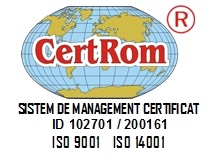Welcome to the Advanced Imaging Laboratory
With experience of more than 25 years, our team's main activities are:
X-ray Tomography
is one of the most used instruments for non-destructive testing. By this method, the internal structure of objects can be visualised and analysed.
Applications: Non-destructive defect discovery, Metrology, Porosity / Inclusion / Density analysis, Quality assurance, Comparison of manufactured parts with CAD data, 3D modelling of miniaturized samples; Percolation and pore network connectivity in porous materials; Small animals investigations; High magnification microradiography for in-situ inspection, etc.
X-ray Fluorescence
is a configurable film thickness and composition measuring tool. This method is used to determine the chemical elements of samples, yielding both quantitative and qualitative results. It can be also used to determine the layer thickness of coated samples.
Applications: Microelectronics, Oil industry (sulphur content), Geology, Fusion plasma, etc.
Luminescence
is a natural occuring phenomen by which chemical elements emit light when being excited by various stimulus.
Applications:
1. Nanoparticles for multimodal imaging. Pure near –infrared emission under up –conversion excitation in the first/second biological windows and X- ray excitation.
2. Structure and physics of lanthanide doped oxide nanoparticles. Local structure versus long – range properties. Aliovalent doping in oxides with tetravalent cations. Magnetic dipole emission of Ln.
3. Photophysics of lanthanide coordination polymers. One and two photon emission processes, antenna sensitization and ligand to metal charge – transfer effects.
4. Thermometry and dosymetry aplications using Lanthanide's luminescence from visible to near infrared range.
The Advanced Imaging Laboratory is part of The National Institute for Laser, Plasma and Radiation Physics.
Check out our equipment.
Check out some of the applications.






